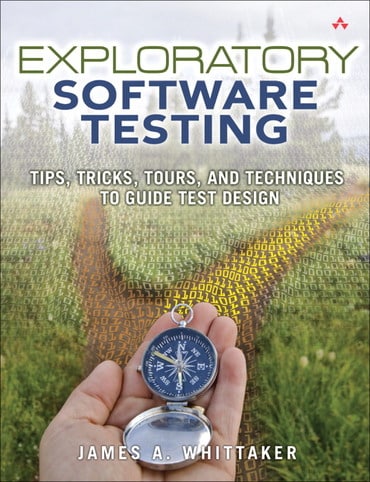
Exploratory Software Testing: Tips, Tricks, Tours, and Techniques to Guide Test Design, 1st edition
Published by Addison-Wesley Professional (August 25, 2009) © 2010
- James A. Whittaker
Price Reduced From: $46.99
Details
- A print text
- Free shipping
- Also available for purchase as an ebook from all major ebook resellers, including InformIT.com
This product is expected to ship within 3-6 business days for US and 5-10 business days for Canadian customers.
Title overview
How to Find and Fix the Killer Software Bugs that Evade Conventional Testing
In Exploratory Software Testing, renowned software testing expert James Whittaker reveals the real causes of today’s most serious, well-hidden software bugs--and introduces powerful new “exploratory” techniques for finding and correcting them.
Drawing on nearly two decades of experience working at the cutting edge of testing with Google, Microsoft, and other top software organizations, Whittaker introduces innovative new processes for manual testing that are repeatable, prescriptive, teachable, and extremely effective. Whittaker defines both in-the-small techniques for individual testers and in-the-large techniques to supercharge test teams. He also introduces a hybrid strategy for injecting exploratory concepts into traditional scripted testing. You’ll learn when to use each, and how to use them all successfully.
Concise, entertaining, and actionable, this book introduces robust techniques that have been used extensively by real testers on shipping software, illuminating their actual experiences with these techniques, and the results they’ve achieved. Writing for testers, QA specialists, developers, program managers, and architects alike, Whittaker answers crucial questions such as:
• Why do some bugs remain invisible to automated testing--and how can I uncover them?
• What techniques will help me consistently discover and eliminate “show stopper” bugs?
• How do I make manual testing more effective--and less boring and unpleasant?
• What’s the most effective high-level test strategy for each project?
• Which inputs should I test when I can’t test them all?
• Which test cases will provide the best feature coverage?
• How can I get better results by combining exploratory testing with traditional script or scenario-based testing?
• How do I reflect feedback from the development process, such as code changes?
